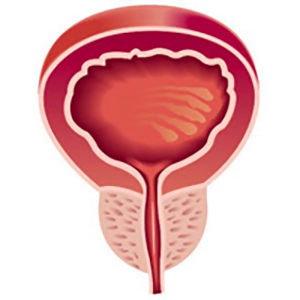Prostate resection weight matters in severely obstructed men undergoing transurethral resection of the prostate

Accepted: May 27, 2022
All claims expressed in this article are solely those of the authors and do not necessarily represent those of their affiliated organizations, or those of the publisher, the editors and the reviewers. Any product that may be evaluated in this article or claim that may be made by its manufacturer is not guaranteed or endorsed by the publisher.
Authors
Objectives: Transurethral resection of the prostate (TURP) remains one of the goldstandard surgical treatments for benign prostatic hyperplasia/lower urinary tract symptoms. The usefulness of a complete adenoma resection is questionable, with studies reporting no impact of the amount of resected tissue on surgical outcomes, irrespective of prostate volume. The aim of this study was to assess whether in less obstructed patients a less extensive TURP may be considered. Materials and methods: Retrospective analysis of 185 men undergoing TURP in one university hospital. Retrieved data included pre-operative prostate volume and Qmax, as well as resected prostate weight and post-operative Qmax. Patients were divided in two groups according to pre-operative Qmax < 10mL/s and ≥ 10 mL/s. Results: A correlation was found between absolute resected prostate weight and post-operative Qmax in the group of patients with pre-operative Qmax < 10 mL/s (r2 = 0.038, p = 0.032), independently of the pre-operative prostate volume. This association was neither observed in the group of patients with pre-operative Qmax ≥ 10 mL/s (r2 = -0.033, p = 0.796) nor in whole population analysis (r2 = 0.019, p = 0.064). Likewise, in the group of patients with pre-operative Qmax < 10 mL/s, the improvement in Qmax was correlated with absolute resected weight and percentage of prostate resected weight (r2 = 0.036, p = 0.037 and r2 = 0.040, p = 0.029, respectively). None of these correlations was found in the group of patients with pre-operative Qmax ≥ 10 mL/s (r2 = 0.009, p = 0.463 and r2 = -0.018, p = 0.294, respectively). Conclusions: Patients with pre-operative Qmax ≥ 10 mL/s may do well with less profound prostate resections, whereas patients with lower pre-operative Qmax seem to benefit from a complete adenoma resection.
How to Cite
PAGEPress has chosen to apply the Creative Commons Attribution NonCommercial 4.0 International License (CC BY-NC 4.0) to all manuscripts to be published.

 https://doi.org/10.4081/aiua.2022.2.169
https://doi.org/10.4081/aiua.2022.2.169



